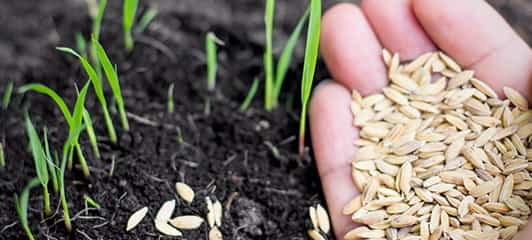Project Report For Agro Seed Processing Manufacturing Plant
Introduction
Project report for Agro Seed Processing Manufacturing Plant is as follows.
Seeds are essential components of agricultural and farming activity. Commercial growers, on the other hand, always choose prepared seeds. As a result, processed seeds have a large global market. With a minimal amount of capital, a person can start a small-scale seed processing plant. Let’s talk about how to start a small-scale seed processing plant in this post.
Paddy and wheat, along with other cereal grains, are the country’s major basic foods. As a result, the amount of these crops produced is the highest. Higher agricultural yield is ensured when certified agricultural seeds are used.
The Indian Seed Act of 1996 governs the production and processing of certified seeds (amended in 2002). These are strong, robust, and genetically pure plants that provide better yields. Under the terms of a State Authority licence, the process includes both agricultural and processing activities.
Project Report Sample On Agro Seed Processing Manufacturing Plant
Get Completely Custom Bankable Project Report
India has achieved incredible progress in the production of food grains, but there is still a lot of room for development. A 10% seed replacement rate every year would assure increased output. Farmers obtain certified seeds from a variety of sources.
However, supply is far insufficient to meet demand. Setting up seed processing factories to suit local demand and make the region self-sufficient in food grain production has a lot of potential.

Seed processing protects seeds from external harm, and seed processing’s fast use for generating higher quality seeds is another significant reason driving the market’s revenue growth. Seed lots collected from agricultural areas frequently comprise leaf and other plant detritus, broken and degraded seeds, weed seeds, and seeds of various sizes, among other things.
As a result, seed processing is critical for achieving the appropriate moisture levels in seeds, eliminating undesirable components, sorting and consistent size grading, and seed treatment to increase seed quality. Other significant drivers driving market revenue growth include a growing focus on food product quality, packaging materials, and cleanliness.
Additionally, seed processing has become more mechanized, and different types of machines are used for upgrading seed quality on the basis of the physical characteristics of seeds.
Market Potential Of Agro Seed Prosessing Manufacturing Plant
Expenses

Product Cost Breakup

Reveneue Vs Expenses

Market Trend

The worldwide seed processing market is estimated to grow at a CAGR of 10.7% over the forecast period, reaching USD 10.06 billion in 2020. The increasing need to feed a rapidly growing worldwide population, as well as increased demand for high-quality seeds to boost agricultural productivity, storage, and shelf life, are major drivers driving market revenue growth.
Seed processing can assist in the production of healthier seeds with greater germination potential. The growing need for seed processing in agriculture to obtain healthier seeds with the highest germination potential is driving the worldwide seed processing market’s revenue rise. Seed processing, also known as seed conditioning, is the process of preparing collected seed for replanting by farmers. Precleaning, cleaning, drying, threshing, size grading, quality testing, treatment, packing, and labelling are among the procedures.
India has made tremendous progress in food grain production, but there is still significant room for productivity improvement. A 10% seed replacement rate per year would result in increased output. Farmers obtain certified seeds from a variety of providers. However, supply falls well short of demand. There is enormous potential for establishing seed processing plants to suit local demand and make the region self-sufficient in food grain production.
Seeds are dried, threshed, cleaned, and checked after harvesting before being supplied to farmers for sowing. Newly collected seeds frequently contain elements like as leaves, stalks, stones, soil particles, weed seeds, and other contaminants that must be removed before the following procedures may begin.
Some significant causes driving seed processing adoption in the agriculture industry include the growing need to increase crop production and quality, minimise losses due to over-drying or damaged seeds, and maintain the appropriate moisture content in seeds post-harvest, during storage, or transportation.
Seed processing allows seeds to be packed in a more uniform way, as well as sorted and stored more effectively.
The shelf life of seeds is governed by a number of factors, including soil nutrition and absorption by parent plants, as well as the environment supplied for crop growth. During extraction, harvesting, cleaning, shipping, and storage, these elements have an impact on seed vigour and viability.

